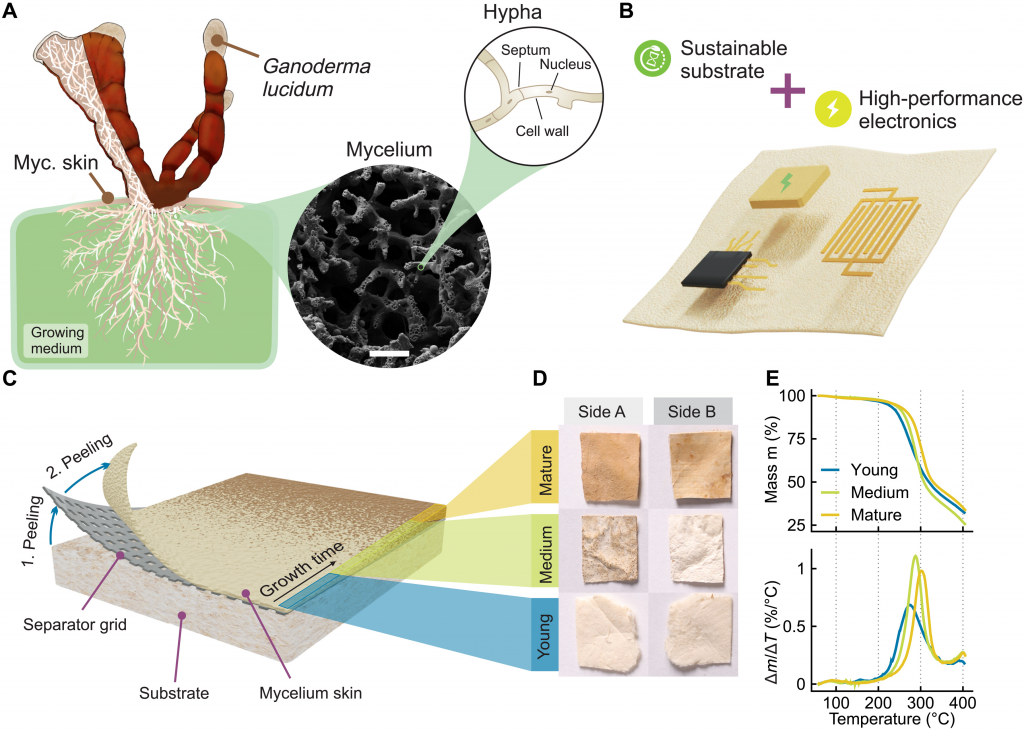Electronic waste, or e-waste, is a huge polluter and a daunting matter of concern. However, according to a team of researchers from Johannes Kepler University Linz, mushrooms may solve the e-waste problem.
Researchers believe processed mushroom skin can be used to build biodegradable electronic gadgets. These gadgets, nicknamed “MycelioTronics” after the mushroom component used in their construction, could be a first step toward substituting non-biodegradable and difficult-to-recycle materials, potentially reducing at least some of the e-waste we generate.

The study, published in the journal Science Advances, shows how mycelium skin can be utilised to substitute plastic polymers to fabricate printed circuit board bases. These circuit boards are composed of various components that are difficult to remove and recycle. Substrates made from mycelium skin, on the other hand, degrade when exposed to light and moisture, allowing recyclable components to be easily separated.
“The substrate itself is the most difficult [part] to recycle,” Martin Kaltenbrunner, a researcher at Johannes Kepler University in Linz, Austria and one of the scientists on this project, told New Scientist. “It’s also the largest part of the electronics.

This solution, like most scientific discoveries, was “more or less an accidental finding,” according to Kaltenbrunner. The study focused on Ganoderma lucidum, a type of mushroom with a shiny skin that covers its mycelium. The researchers removed this skin and treated it further, quickly discovering that when dried, the material is flexible, durable, and able to tolerate high temperatures.
According to reports, mycelium has the potential to accelerate the transition to a circular economy that moves away from the “take, make, waste” production and consumption model.

According to the researchers, the materials have a very long shelf life, assuming they are kept separately from UV rays. Additionally, the substrate can simply be buried in soil when it’s time to dispose of the device, where it will biodegrade and naturally separate from the more recyclable computer parts.
According to a news statement, the material was tested by placing a standard computer chip on it. The researchers found that the performance of the mushroom skin was exceptional. The hope is that mycelium skin substrates used in wearable and untethered electronic devices may one day significantly reduce the escalating mountains of e-waste, even though they are not yet suitable for mass manufacturing.
“The prototypes produced are impressive,” Andrew Adamatzky, a computer scientist at the University of the West of England, told New Scientist, “and the results are groundbreaking.”


